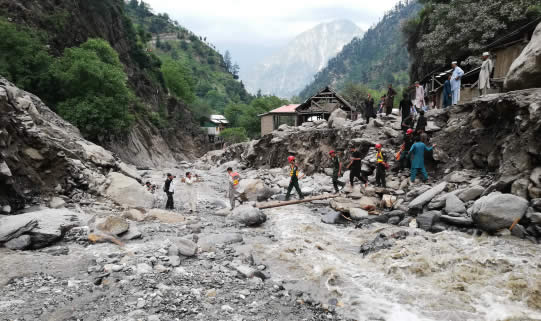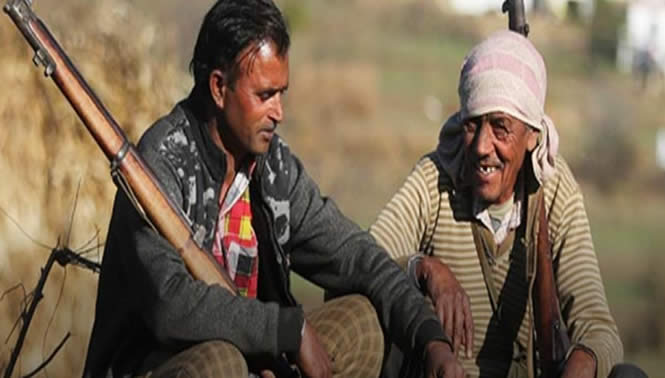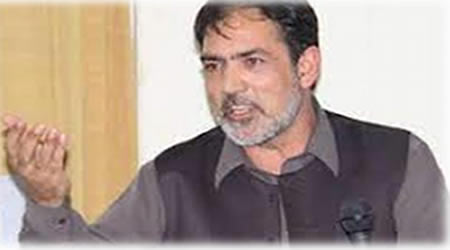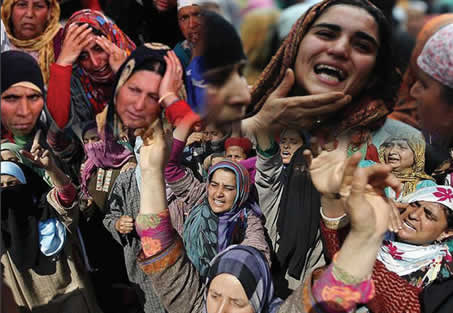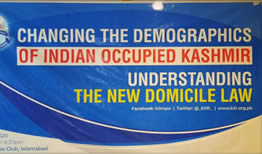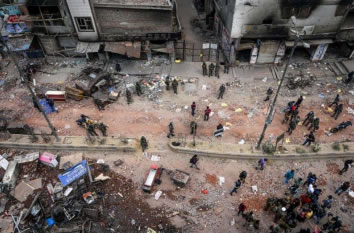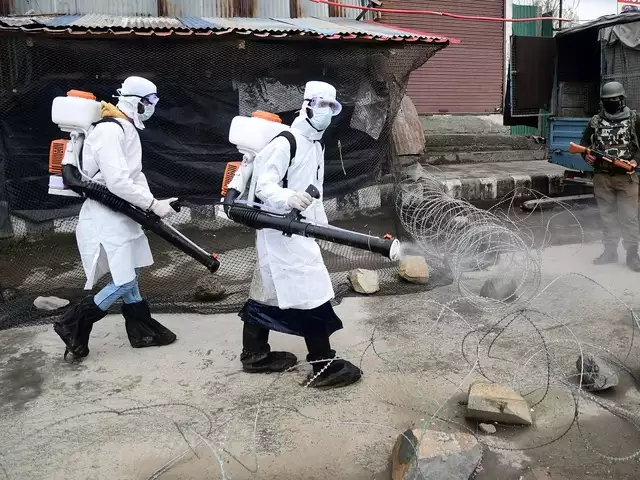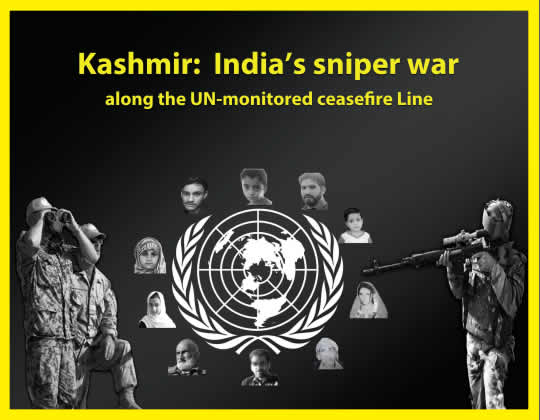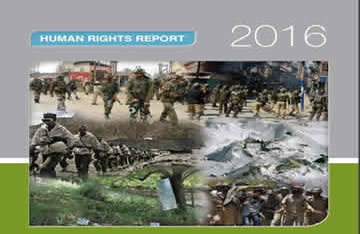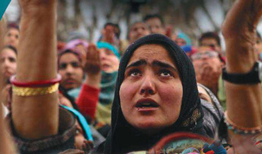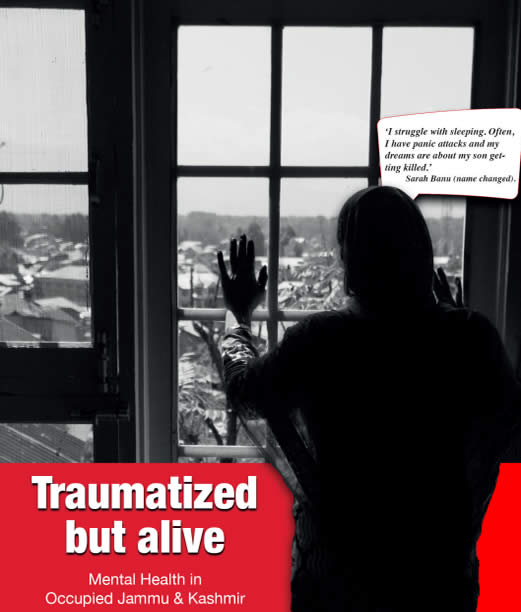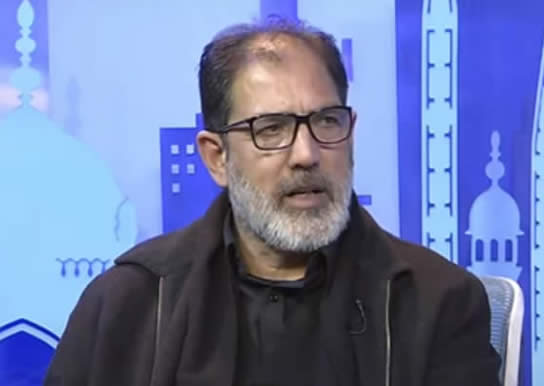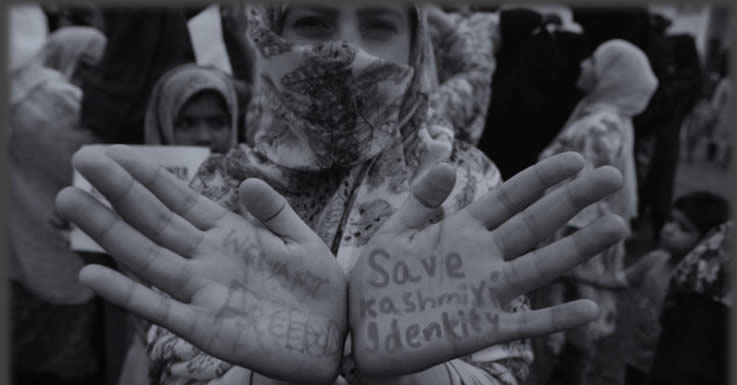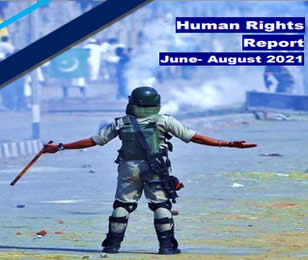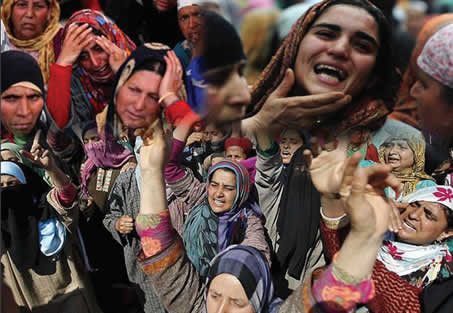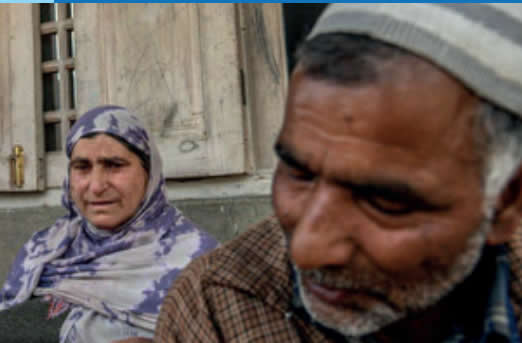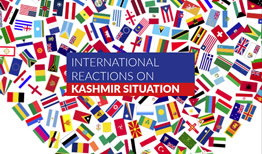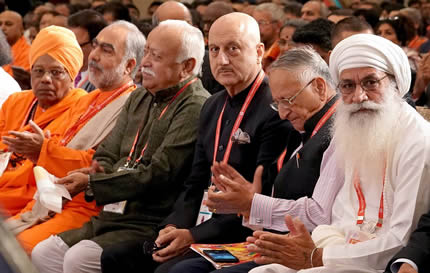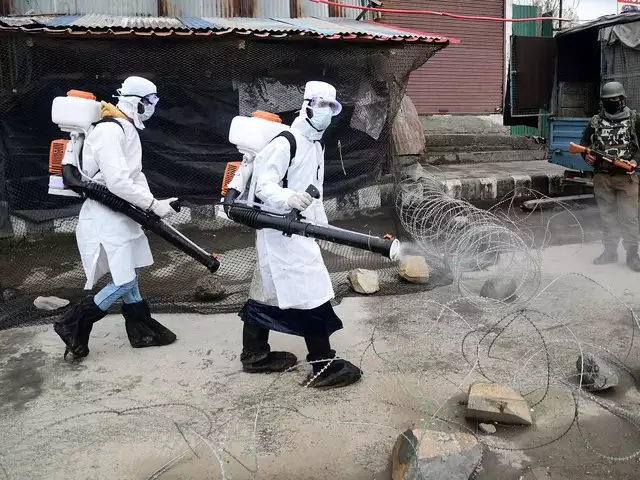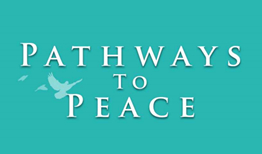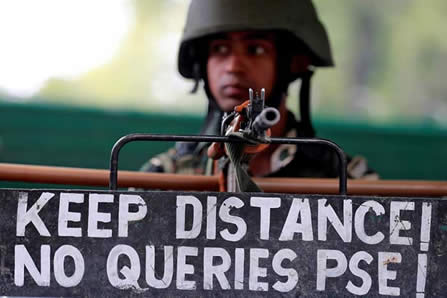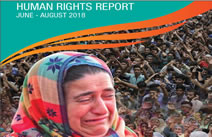Weaponization Of Politics By India In Kashmir:
Weaponization Of Politics By India In Kashmir:
Abstract
The colonization of Kashmir has long been a sort of Holy Grail dream for the Indian state. Occupying this strategically vital region, and taking hold of its land and resources is all that the Indian leaders believed was imperative to control the subcontinent. Their urge to keep Kashmir with them (India) by any means is amply reflected in the approach that successive Indian governments have taken from time to time. However, throughout this carrot-and-stick war to take Kashmir, the Indian rulers with rightist leanings, who get legitimacy and power from Hindutva philosophy, have broken all limits of savagery. It is no longer a secret that they played a diabolical role in depriving Kashmiris of their nationhood and stealing their national, cultural, and religious identities. A case study of the conflict substantiates the widely held belief that ever since India gained its control over the territory, successive governments have remorselessly pursued and practiced neo-colonialist politics to strengthen its grip over the territory, exploiting its resources and denying its people the right to self-determination promised to them by the international community.
In this paper, we are going to examine some of the most critical moments of the past seven decades to have an in-depth understanding and grasp of the intrigues war tactics used by the Indian leaders to sabotage the legitimate political aspirations of the Kashmiri people. The paper further chronicles a series of attempts by the Indian elite aimed at sowing the seeds of discord among various political, religious groups, and ethnicities as well as hijack the Kashmiris’ Azadi narrative. It also delves into the details about how the leaders of a freshly decolonized nation-India- who fought years together to get rid of imperialism, copied the Britain’s blueprint for colonialism and applied all its elements to their advantage in Kashmir. The paper unfolds the causes and consequences of political interferences by New Delhi that have had a significant impact on the region’s future since 1947. Unfortunately, India’s colonial-era policy has a long-term impact on Kashmiri society. Not only did it aggravate the Kashmir situation, but it also generated differences among Kashmiris that are still visible today.
Key words: Divide and rule, Kashmir, weaponising politics, India, occupation, colonizing, hijacking, Kashmiri narrative, J&K, IoJK
Preface
Kashmir has long been a political laboratory for India’s power elite, a testing ground where they used various methods and strategies to establish narratives of their own choosing against the much prevalent narratives and political ideologies that the people of the region had nourished for centuries. Indian governments have invested hugely to develop a parallel narrative on Kashmir that served best to its agenda in the region. The counter narrative building process involved different techniques that included the distortion, misrepresentation and manipulating history and historical facts about the Kashmir dispute. Indian leaders, from Nehru to the current crop of politicians, are complicit in this vile effort to demolish the Kashmiri narrative. They weaponized politics to keep the region in a state of perpetual political disorder and to prevent the rise of any powerful political figure or a group, which in their view, could be a potential threat to Indian interests in the region in future.
Similarly, the divide and conquer strategy was used to thwart the ascent of any leader capable of bringing the Kashmiri people together, taking on the Indian government, and forming a unified front against it. Creating political division, using religion and regionalism to sow the seeds of discord and pitting one community against another and discrediting the Kashmiri political leadership through vicious smear campaigns have been the hallmarks of the divide and rule strategy that the successive Indian rulers had religiously pursued. All of the Indian rulers shared the goal of integrating Jammu and Kashmir into the Indian union, despite the fact that each one had their own distinct agenda. Their ability to dominate the region with ease and little opposition for almost fifty years can be attributed to this divide and conquer strategy.
However, Kashmiris came together during the 1989 mass uprising to demand an end to this harsh colonial legacy. The Kashmiris faced numerous challenges for many years but their unwavering determination to fight for their rights, reclaiming their identity and their refusal to succumb to despair is something that shocked the neocolonisers in New Delhi who shamelessly weaponized everything against the Kashmiris including politics and the political dispute to practically block every attempt and effort to seek a durable solution to the dispute. In addition to the divide and conquer strategy, Indian authorities attempted to manipulate the minds of Kashmiris by using political proxies and surrogates.
KASHMIR: THE HISTORICAL CONTEXT
Examining the region’s past is crucial to comprehending this long-running conflict. Of the 565 princely states that made up British India, the largest and fourth most populous was the state of Jammu and Kashmir. It was made up of five different multilingual regions: the valley of Kashmir, Jammu Province, Poonch, Ladakh, and Gilgit and Baltistan Region. These five ethnically diverse regions, with an overwhelming majority of Muslim population, together constituted the state of J&K often referred to as KASHMIR. In 1947, approximately 77% of the population were Muslims, 20% Hindu, 1.5% Sikh, and 1% Buddhist. Historically all these communities have lived together in peace, harmony, and coexistence. The erstwhile state of J&K stretched over an area of 84471 square miles had been ruled by Buddhists, Mughal emperors, Sikhs and Dogras from time to time. The state is said to have lost its statehood in 1587 when Mughals took up the reins of government in Kashmir after defeating Yousuf Shah Chak, who ruled the state from 1579 to 1586 AD.
The 166-year long Mughal rule on Kashmir came to a dramatic end in 1752 when Afghan ruler Ahmad Shah Abdali, defeated the Mughal army. In 1819 the state of Kashmir fell into the hands of powerful Sikh ruler of Punjab Maharaja Ranjit Singh who had made three attempts to conquer Kashmir in a row right from 1813 to 1819. In 1822, the Sikh Maharaj anointed Gulab Singh as Raja of Jammu whereas his brother Dhyan Singh was appointed as Prime Minister in 1928. A worst deal in recent human history, condemned by historians as the Sale-Deed of Kashmir, was signed on 16-March-1846. Under this shameful treaty the territory was transferred to Gulab Singh as his “independent” possession for only a sum of Rs. 7.5 million. When the Gulab Singh dynasty failed to exercise actual control over Gilgit, the British being suspicious of Russian motives towards the Pamirs, created the Gilgit Agency in 1889 and placed it under direct control of a British Political agent.
THE END OF BRITISH RULE
In 1947 the British withdrew from India leaving behind a partitioned subcontinent. India and Pakistan became separate sovereign states on August 14 and 15, respectively. At the time, J&K state- a nominally sovereign entity of the British Empire- was ruled by a Hindu Maharaja According to the partition plan the princely states had three choices: They had two options: they could choose to remain independent entities or join Pakistan or India. This was on paper, in practice there were only two choices either to accede to India or Pakistan. The state was ruled by the Hindu Maharaja Hari Singh, but at the time, Muslims made up the vast majority of Jammu Kashmir’s population. Given that the subcontinent was divided based on religion and that Jammu and Kashmir with a sizable Muslim majority, Pakistan most likely owned this land. The state was ruled by Hari Singh, a Hindu Maharaja, however, the decisive majority population of Jammu Kashmir consisted of Muslims at the time. Since the subcontinent was partitioned on a religious basis and the princely state, with a vast Muslim population, would have inevitably been a part of Pakistan .Second, a vast majority of Kashmiris have close ties to Pakistan in terms of geography, culture, religion, and economy. Therefore, it makes perfect sense that Kashmiris would have chosen to join Pakistan over India.
India: A new colonialist
A new era dawned with the birth of India and Pakistan as two sovereign states on 14 and 15 August 1947. The historical development gave the people of Kashmir new hope as they began to believe that their days of slavery were over. However, they were unaware of India, a newly emerging colonial power that broke all previous records after making a secret agreement with the Maharaja and entered Kashmir with its troops on October 272 1947nd brazenly violated the partition plan by forcibly occupying two thirds of the state.
Unfolding the Chronicles of Indian Imperialism
Some 77 years ago, the right to self-determination was incorporated in the UN Charter33 as an essential component to free the world from the scourge of colonization and colonialism. Since then the realization of this right paved the way for successful culmination of freedom struggles in many parts of the world, including Asia. By virtue of this principle people reeling under foreign occupations were accorded the right to determine, without external interference, their political status and to pursue their economic, social and cultural development. The concept of the right to self-determination (RSD), which is one of the fundamental goals of the UN, continues to direct the organization’s decolonization initiatives to end the shameful practice of colonization and freeing people from the clutches of foreign occupations. The RSD has also been made as a part of modern international law and other world treaties such as UDHR44 Geneva Convention and the Declaration on Colonialism, particularly, carries a strong reference for the right of self-determination. The principle of self-determination outlines not just the duty of states to respect and promote the right, but also the obligation to refrain from any forcible action which deprives peoples of the enjoyment of such a right. The same principle was applied to seek a peaceful solution of the Kashmir conflict when it was brought into the notice of the highest body (UN) in 1948 by India soon after occupying a major portion of the erstwhile state of Jammu and Kashmir.
After listening to the representatives from both the countries, the United Nations decided to establish a commission to facilitate a solution of the dispute. As a result, Commission on India and Pakistan5 (UNCIP) was established through a Security Council resolution on 20 January 1948 with a sole purpose to facilitate plebiscite in the region in light of the UNSC resolution dated 21 April 1948. The UNCIP, however, sent its final plebiscite recommendations on 11 December 1948, to India and Pakistan. Both the Governments accepted the proposals and the recommendations the Commission (UNCIP) had adopted through a unanimous resolution, on 5th January 19496 Subsequently, the commission proposed a comprehensive roadmap to seek an amicable solution to the Kashmir imbroglio. It was a momentous occasion for the Kashmiris as the United Nations formally recognised and acknowledged their inalienable right to decide their political future. The adoption of the historic resolution came as a great beacon-light of hope for millions of Kashmiris as they began to believe that the moment for their freedom was imminent and they too will finaly receive justice so long denied to them by aggressors and occupiers. But their cherished dream of freedom from foreign occupation was soon turned into a nightmarish ordeal by none but the crafty Indian rulers who brazenly violated the norms of international law and the commitments they made vis-à-vis holding plebiscite in the region.
Pertinently, India had formally accepted the choice of the peoples of the princely states under the colonial administration to join either Pakistan or India as a procedure of decolonization subject to Article 73 of the UN Charter that recognize the principle that the interests and well-being of the inhabitants of these territories are of paramount importance. Regarding Kashmir, the UN Security Council defined India as an administrative state by defining Kashmir as a disputed territory. On 12 February 1951, Jawaharlal Nehru, the then Prime Minister of Indian in his statement in the Indian Parliament said, “We have taken the issue to the United Nations and given our word of honour for a peaceful solution. As a great nation, we cannot go back on it. We have left the question for a final solution to the people of Kashmir and we are determined to abide by their decision.”
Instead of honouring these commitments and paving a way for the implementation of the UN proposed road-map on Kashmir the Indian rulers resorted to Machiavellian Machinations of deceit and deception to obviously avoid the referendum in the state. The Indian rulers ridiculously ignored and undermined the role of the UN and UNCIP and threw to the winds the pledges/commitments they had made with the international community and the people of Jammu and Kashmir. The Indian rulers chose to pursue the route of colonialism in order to fully seize Kashmir and thwart all attempts at a peaceful settlement of the conflict. They choose a violent path to suppress by the dint of force the Kashmiris’ legitimate demand for the right of self-determination. The use of excessive force by the Indian state over the years had resulted in the deaths of hundreds of thousands of civilians and violation of human rights at an unprecedented scale. Every form of violence that is known to the human world has been unleashed upon the people. Internal displacements, forced migrations, systematic civilian killings, state sponsored violence, and ethnic cleansing, genocide, torture, harassment and humiliation of indigenous people and so on have been rampant and a regular feature of life in Kashmir.
Beyond deaths, the state sponsored violence has left Kashmiris completely devastated. No facet of life in Kashmir Weaponization of politics by India in Kashmir Kashmir Institute of International Relations had left untouched by the long unresolved conflict, which over the times has meandered dangerously from illegal occupation to forced annexation of the territory. The attempted annexation of the disputed territory by the Indian government on 5th August 20198 is one such instance that is sufficient enough for the world to comprehend the perils of this dangerous conflict. A year-long siege and clampdown coupled with information blockade, caging entire population, altering the state’s nomenclature, bifurcating and reducing it to a union territory are some of the dangerous totalitarians moves that laid bare the New Delhi’s settler colonialism agenda and its imperialistic designs of conquering the hapless and defenseless people of the region. This mediaeval mindset that goes in contravention of the UN’s decolonization agenda has been solely responsible for the miseries the Kashmiris have been going through the years of belligerent occupation.
Kashmir a smoldering volcano
The people of Kashmir are still enduring the consequences of a sordid political campaign that started months before the announcement of Indian Independence Act of 1947 that led to the split of the subcontinent. This campaign, which was spearheaded by secular touting leaders of the Indian National Congress including M K Gandhi, Pandit Nehru, Sardar Vallabhbhai Patel and others, has not only compounded this issue but it had virtually laid a foundation of a bloody conflict that on the one hand poses a serious threat to the region’s peace and stability while on the other it continues to wreak havoc on innocent lives on both sides of the so-called Line of Control (LoC).
Since 1947, Kashmir—a region riven by political violence—has witnessed protracted periods of political instability, upheaval, and disorder. However, the majority of the issues that Kashmiris currently confront are the result of growing majoritarianism and undue meddling in internal affairs by India’s powerful political and administrative elites seated in New Delhi’s power corridors. The people of the region being the real stakeholders are supposed to take crucial political decisions about their future but their legitimate aspirations have been ignored and undermined by the India’s power elite that always opted to control the former by sheer deception, coercion, gerrymandering and political maneuverings .Unfortunately, these colonial-era strategies, meant to undermine the legitimate political aspirations of the Kashmir’s majority community, hijacking their voices and narratives, remain profoundly ingrained in New Delhi’s overt and convert mechanisms that have gradually turned the region into a smoldering volcano, which finally exploded in 1989–90. These Imperialist policies have had a very terrible impact on Kashmiri lives. In addition to causing divides between various religious and ethnic groups, these policies resulted in the exploitation of indigenous people and their resources.
India’s unlawful meddling in Kashmiri politics
The unlawful and intrusive interference in Kashmiri politics by India started soon after the Britain passed Independence Act1010 on 18 July 1947. In the immediate aftermath, leaders of the Indian National Congress embarked on an ambitious mission to persuade Maharaja of Kashmir to accede to India even against the will of the Muslim majority. During this crucial period of time, the congress leaders including M K Gandhi, Jawahar Lal Nehru, Patel and his close confidante VP Menon and others remained hectically engaged in negotiations with Maharaja and Sheikh Muhammad Abdullah and fought a carrot-and-stick battle11 to seek their consent, which finally culminated in the shape of so-called instrument of accession that was later on used by the Indian rulers as a tool to legitimize it’s belligerent occupation and change the entire discourse on Kashmir. The extent of undue intervention in the political affairs of Kashmir by the Indian political and administrative elite can be readily assessed through their treatment of Kashmiri leaders who placed their trust in them and sang praises for the Indian “democracy and secularism”.
The dismissal of Prime Minister Ram Chandar Kak and appointment of a pro-India Punjab-born jurist Mehr Chand Mahajan as successor, followed by the release of S M Abdullah from jail and his appointment as Head of Emergency Administration, establishment of an interim government by the Maharaja with Abdullah as his prime minister and then relegating the Maharaja as a mere constitutional ruler were significant events that demonstrated the Indian leaders’ burgeoning fervor and their desire to annex the region into Indian dominion. Their yearning to grab Kashmir originated from their conviction that he who holds Kashmir will govern the entire subcontinent It goes without saying that Mr. Kak, who aspired for Kashmir’s independence, was unceremoniously ousted from the prime minister’s position when SM Abdullah, Pt. Jawaharlal Nehru and Acharya13 Kripalani hatched a conspiracy and poisoned Maharaja’s ears against him. Mahajan, the man who succeeded Kak, had close links with the congress leader Sardar Patel. Prior to taking up the position offered by the Maharaja, Mahajan had formally sought permission from Sardar Patel, who was serving as Indian home minister at the time. In his memoir, “In Looking Back” Mahajan said, “I saw Sardar Patel, the Home Minister on 19th September. He not only encouraged me but practically ordered me to accept the offer and asked me to proceed to Srinagar at once. He said he would grant me eight months of leave (from the high court). I was also given permission to take up service in the Kashmir State which he thought was in the interest of India in the circumstances that had arisen”.
Prior to stepping into the role of prime minister of Jammu and Kashmir on October 15, 1947, Mr. Majan had soughtcounsel from Lord Mountbatten, Mahatma Gandhi, Pandit Nehru, and Sardar Patel. To every ones amazement, Mahajan managed to convince the Maharaja of Jammu and Kashmir to formally accede to India in less than two weeks’ time. Not only that he also ensured that the India’s troops land at Srinagar Airport by the morning of the 27th October to crush the uprising. Mehr Chand Mahajan, often credited as architect of Jammu & Kashmir’s accession to India, is hailed by the right wing parties as a national hero. This is the reason that the BJP installed his statue in Jammu in recognition of his services for persuading the dithering Royal to finally sign the instrument of accession. In essence, the leaders of India lacked the ethical authority and rationale to meddle in the affairs of Kashmir or apply coercive strategies in persuading the Maharaja to accede to India, especially in light of their rejection of the Nawab of Junagadh’s decision to accede to Pakistan. Despite that Madhav Sadashivrao Golwalkar and M K Gandhi visited Kashmir to persuade the hesitant Maharaja to relinquish his idea of independence and reassured him that his future would be secure with India.
Mehr Chand Mahajan appointed as prime minister of J&K
Mehr Chand Mahajan, a serving judge in Lahore High Court, was appointed by Maharaja as the prime minister of Jammu and Kashmir on October 15, 1947. It is known that Justice Mahajan’s name was proposed to Maharaja by Sardar Patel - the then Home Minister of India. After assuming the charge of the prime minister office, Mahajan kept inclose touch with Patel16 to keep him abreast of the situation at a moment when the region was on the cusp of change. It is worth to recall here that Justice Mahajan was a member of the infamous Radcliffe Boundary Commission, which awarded Gurdaspur (initially awarded to Pakistan) to India. Mahajan is believed to have played a significant role in persuading Lord Mountbatten to grant Gurdaspur to India despite having a manifest Muslim majority17. Mahajan’s suggestion, that River Ravi18 should be made the boundary led to amendment in the partition plan, which ultimately provided India with a strategic lifeline and direct access to Jammu and Kashmir. 12 Gazetteer of 1888 After Radcliffe mission Justice Mahajan took a formal leave from the Indian government and assumed the charge as prime minister of J&K on 15 September 1947.
Golwalkar visits Kashmir
On October 17, 1947, Madhav Sadashivrao Golwalkar, popularly known as Guruji, visited Kashmir to convince Maharaja to give up the idea of retaining Kashmir as an independent Kingdom and accede to India. Arun Bhatnagar in his book19 explains how Guru Golwalkar played an important role in the J&K accession saga. According to Bhatnagar Guruji on the insistence of Patel went to Kashmir to get Maharaja Hari Singh to accede to the Indian union. It is said that Sardar Patel convinced the Guru Golwalkar through M C Mahajan to visit him to convince Hari Singh to accede to India. Justice Mahajan who latter on took over as the third Chief Justice of India in 1953, is credited as the main architect behind Kashmir’s accession to India. He remained in office until March 1948 when Maharaja announced interim government with Sheikh Abdullah as his prime minister. However, his ascendance to the coveted post remains still shrouded in mystery as no one has bothered to ponder as how a non-Kashmiri could become prime minister of a state whose domicile law bars outsiders from taking a public office or seeking a government job or purchasing property in the region.
GANDHI IN KASHMIR
In the first week of August (1947) Mahatma Gandhi, who found no time to visit Kashmir since his homecoming from South Africa in 1915, visited Kashmir. The visit was part of the persuasive campaign intended to get the Maharaja’s consent confirmed. Gandhi’s crucial visit and his meetings with Maharaja and leaders of National Conference (NC) including the wife of jailed NC leader SM Abdullah, Bakhshi Ghulam Muhammad, Gh Mohi ud Din Karra, GM Sadiq and and Maharani Tara Devi20 in Srinagar gave some turning points to course of events that followed thereafter. Some historians believe that the planned visit was to secure the release of SM Abdullah who was serving a sentence of three years imprisonment in Jammu jail, with some of his close associates, since May, 1946 on the charges of “sedition”. However, Gandhi had tried to brush aside the impression by saying that his visit was purely apolitical but the developments that took place in the immediate aftermath including the sudden release of Abdullah and Maharaja Hari Singh’s letter to Mountbatten informing him about his intention of setting up an interim Government with Sheikh Abdullah as his Prime Minister were sufficient enough to understand the real motives behind his visit.
According to various historical accounts Mr. Gandhi during his meeting with Hari Singh and Tara Devi gave them full assurance that in case he accedes to India, his interests as head of the State would be protected. Further he advised him to release Sheikh Abdullah and also remove Ram Chand Kak from Prime Minister-ship as he was against the accession with India.21 These developments amply demonstrate the level of influence the leaders of Indian congress had wielded on Maharaja who finally declared allegiance to India without respecting the wishes & aspirations of the people of Jammu & Kashmir. Indian invasion & emergence of the conflict Following years of suffering at the hands of the oppressive Maharaja, the people of Kashmir found themselves trapped in a new form of imperialism on October 27, 1947, when secular touting Indian leaders deployed their troops to Kashmir, under the guise of instrument of accession, and seized two-thirds of the state in blatant disregard of the partition plan. The controversial agreement, which was disputed by many neutral observers, was presented by the Indian leaders as a reason behind their decision to send its troops to Kashmir. However, the existence of any such document (IoA) could have provided a high moral ground for Indians to defend their decision but they failed in making it public officially or at some international forum. The Indian invasion triggered a strong wave of sympathy and empathy in support of the Kashmiri people within the dominion of Pakistan and the Pakistani government reacted strongly to the Indian move and described it as a flagrant violation of the partition plan. The all-out invasion ultimately led to the first was first war between India and Pakistan.
Kashmir lands on UN’s door
On 1 January 1948, the India took the Kashmir dispute to the United Nations and lodged a complaint against Pakistan.
Sheikh Abdullah replaces Mahajan as Prime Minister
In March 1948, Maharaja Hari Singh-the de facto ruler of the state-announced an interim government in J&K and appointed Sheikh Abdullah as the prime minister. He chose an eight-member Cabinet, with the other members being: Bakshi Ghulam Mohammad – Deputy Prime Minister, Mirza Afzal Beg – Revenue, Sardar Budh Singh – Health and Rehabilitation, Ghulam Mohammed Sadiq – Development, Shyam Lal Saraf – Civil Supplies and Local Self- Government, Girdhari Lal Dogra – Finance, Pir Mohammad Khan – Education22. Meanwhile, the United Nations facilitated an agreement between India and Pakistan on January 01, 1949, which permitted both nations to maintain authority over the territories of Jammu and Kashmir until a referendum could be conducted in the region. On April 21, 1948, the UNSC adopted a resolution, which reiterated its demand that the accession of the state should be “decided through democratic method of a free and impartial plebiscite”.
The resolution also instructed the UNCIP to visit the subcontinent to mediate and facilitate both countries to hold a plebiscite. On January 5, 1949, the UN while asserting its position on the issue made it clear that, “The question of the accession of the State of Jammu and Kashmir to India or Pakistan will be decided through the democratic method of a free and impartial plebiscite23”. The cease-fire resolution was implemented on July 27, 1949 after the military representatives of Pakistan and India met in Karachi. On 12 February 1951, Jawaharlal Nehru, the then Prime Minister of India in his statement in the Indian Parliament said, “We have taken the issue to the UN and given our word of honour for a peaceful solution. As a great nation, we cannot go back on it. We have left the question for a final solution to the people of Kashmir and we are determined to abide by their decision.” Unfortunately, the Indian rulers backed out from their and commitments and the plebiscite they promised to Kashmiris was never held. Instead of honouring their commitments, the Indian rulers ridiculously undermined the role of the UN and threw to the winds the solemn pledges they had made with the international community and the people of Kashmir.
INDIAN ATTEMPTS TO CEMENT ITS CONTROL OVER KASHMIR
Kashmir, as mentioned above, has been in the grip of wide-ranging crisis ever since the Indian army entered in the region24. New Delhi’s unwanted and unwarranted interference and its wild ambitions to conquer the region have been the major cause and consequence of persisting political instability and unrest that have exacted heavy toll on the Kashmiris. A series of events that took place in the region between 1949 and 1977 are important to understand the destructive role that Nehru and his successors played in consolidating India’s grip on J&K. First, they played a double game with Maharaja and Sheikh Muhammad Abdullah and used them as pawns in their geopolitical game against Pakistan. The Maharaja of Kashmir was cautioned that if he refused to join India, he would face the possibility of losing all that he had, whereas on the other hand, the SMA was enticed with the Naya Kashmir package and
autonomy by the Indian premier. However, the crafty Indian leaders never fully threw its weight behind either the Maharaja or Sheikh Abdullah in their pursuit of political objectives in the true sense. The SMA’s ascendance to power as prime minister of J&K, his role in drafting and incorporation of article 370, the SMA’s unceremonious dismissal and his arrest in a conspiracy case in 1953, creating a parallel group within his cabinet that acted in unison with Karan Sigh and B N Mullick against Sheikh Abdullah, appointment of Bakshi Ghulam Muhammad as prime minister of J&K, introducing Indian National Congress in the state to counter the rise of the regional political forces, erosion of the so-called autonomy, replacing constituent assembly with legislative assembly and then Indira-Abdullah Accord of 1975 are among the major developments crucial for comprehending the cunning and intricate game of trickery and falsehood Indian leaders played to lure the then Kashmiri leadership that willingly or unwilling fell into their trap.
Indian leaders’ policy of divide and rule began to unravel in the early 50s when SMA, who became a pawn in India’s political war games in Kashmir, was ditched by none but his close friend Pundit Jawaharlal Nehru. Nehru, on the one hand, kept appeasing the SMA while on the other he created a special group comprised of Bakshi Ghulam Muhammad, S L Saraf, D P Dhar and others who were acting in unison with Karan Sigh and B N Mullick against Sheikh Abdullah. This new group of loyalists, which had a direct access to prime minister’s house, later played a key role in the dismissal of Sheikh Abdullah. SMA was arrested on August 9, 1953, at Gulmarg under the directions of Nehru on the pretext of that Sheikh Abdullah had established liaison with Pakistan Government25. Once a staunch supporter of Independent Kashmir, Sheikh Abdullah not only helped India in taking Kashmir but also defended India at the world forum (UN). At UN, SMA declared that Kashmir acceded legally and constitutionally to the Dominion of India26. Despite all that Nehru did not spare him and got him kicked out through his own aides by labeling him as a Pakistani agent. Sheikh’s arrest ultimately led to a split within the NC the party was divided into two groups-one group was of those who were loyal to Sheikh Abdullah, and sought either independence, a plebiscite or greater autonomy from the Government of India and the other group of those who aligned themselves with Bakshi and the 27Government of India.
Indian constitution comes into force in J&K
In 1950, when Kashmir issue was very much alive in the United Nations, the Indian constitution came into force in Jammu and Kashmir. Article 1 of the Indian constitution defined J&K as a “state of India”, Article 370 accords special status to J&K.
Bakshi Ghulam Muhammad replaces Sheikh Abdullah
In a dramatic turn of events Sheikh Muhammad Abdullah a serving prime minister was dismissed on August 9, 1953 by Dr. Yuvraj Karan Singh, the head of state of Jammu and Kashmir, for allegedly losing the confidence of his cabinet. After caging Sheikh Abdullah Nehru installed Bakshi Ghulam Mohammad, who topped the list of his key loyalists, as Prime Minister of Jammu & Kashmir. It is quite interesting to see that on the one hand New Delhi applied divide and rule tactic to sideline Sheikh Abdullah and weaken his party-the JKNC that enjoyed a massive support of the Kashmiri masses, while on the other it started a constitutional onslaught to erode the Kashmir’s autonomy, guaranteed to it under the article 370 of the Indian constitution. In early fifties several provisions of the Indian constitution were extended to J&K’s constitution through a presidential order.
Indian attempt to legitimize the instrument of accession
In 1956 a special session of the J&K constituent assembly was convened in which the assembly adopted its constitution and defined the territory of Jammu and Kashmir as an “integral part of India28”. This was for the first time that New Delhi used the puppet assembly of Jammu and Kashmir as a tool to legitimize the so-called instrument of accession. It was only after this move that India publically started calling the accession “final and irrevocable” and began referring to Jammu and Kashmir as an integral part of India.
Note: During the intervening period of time (1948 to 1957), the United Nations Security Council had adopted thirteen resolutions directly relating to the final solution of the Kashmir dispute.
However, on January 24, 1957, the UNSC rejected the ratification through its resolution 1951 and made it abundantly clear that no action by the State’s constituent assembly to decide the final disposition of the state would be considered legal thus reaffirming plebiscite as the final solution. Elections were held in the state on from February 24 to March 25, 1957, in which SMA’s party (JKNC) won 68 out of 75 seats in the Legislative Assembly. J&K constituent assembly was dissolved and formally replaced by a legislative assembly. After the elections Indian home minister Govind Ballabh Pant visited Srinagar where he declared that the state is now fully a part of India. In 1960, through another amendment in the Indian constitution, Supreme Court and election commission of India extend jurisdiction over J&K Meanwhile, elections were held in the state on February 17-18, 1962, in which the JKNC won 70 out of 75 seats in the Legislative Assembly. Prime Minister Bakshi Ghulam Mohammed, who served as the Prime Minister of J&K from 1953 to 1963, resigned on October 4, 1963.
Khwaja Shamsuddin appointed as PM
Khwaja Shamsuddin of the National Conference (NC) and a Bakshi loyalist, was appointed as prime minister of the state. But Shamsuddin headed the state only for a very brief period. G M Sadiq of INC appointed as PM Shamsuddin resigned on February 29, 1964, and Ghulam Mohammed Sadiq of the Indian National Congress (INC) formed a government as prime minister. Ghulam Mohammed Sadiq served as 3rd and last Prime Minister of the state from 1964 to 1965, when the position was renamed to Chief Minister. He, however, continued as the Chief Minister till his death in 1971. Sadiq was instrumental in laying the foundation of the Congress Party in Jammu and Kashmir. The move to launch the non-state party (INC) in the region was widely seen as yet another endeavor by New Delhi to diminish the influence of the NC and to establish a parallel party to promote its own agenda.
1965: Change in the state’s nomenclature
J&K had its own Prime Minister and President (Sadr-e-Riyasat) until 196529. The Sixth Amendment to the J&K Constitution, carried out in 1965, made a fundamental change to its basic structure. The so-called constitutional amendment led to lowering the ranks of both Sadr-e-Riyasat and Prime Minister replacing the two positions as Governor and Chief Minister. The Sixth Amendment did not merely change the nomenclature, but the eligibility, mode and method of appointment of Head of the State.” The change in the State’s nomenclature was the first attack on the sovereignty and special status of Jammu and Kashmir by New Delhi.
Earlier, the territory of J&K under Indian control had a Sadr-e-Riyasat (president) for Governor and Prime Minister in place of Chief Minister. As a result of an amendment to the Constitution of Jammu and Kashmir that went into effect on May 30, 1965, the position of prime minister was changed to chief minister. In June 1965, Jammu & Kashmir National Conference (JKNC) merged with the Indian National Congress (INC) on June 6, 1965. In 1967 elections the Indian National Congress (INC) won 61 out of 75 seats in the Legislative Assembly. The NC faction headed by former Prime Minister Bakshi Ghulam Mohammed won eight seats in the Legislative Assembly. Sheikh Mohammed Abdullah was released from prison on December 8, 1967. Chief Minister Ghulam Mohammed Sadiq died on December 12, 1971, and Syed Mir Qasim of the Indian National Congress (INC) formed a governmentas Chief Minister.
1972 Elections
Elections were held in the state on February 8, 1972, and the Indian National Congress (INC) won 58 out of 75 seats in the Legislative Assembly.
Indira-Abdullah Accord
The Indira–Abdullah Accord signed in 1975 between Kashmiri leader Sheikh Abdullah and then Prime Minister of India Indira Gandhi, decided the terms under which Abdullah would reenter the politics of Kashmir. It allowed Abdullah to become Chief Minister of Jammu and Kashmir again after 22 years. Representatives of Sheikh Mohammed Abdullah and Prime Minister Indira Gandhi signed the Kashmir Accord on November 13, 1974. With the support of the Indian National Congress (INC), Sheikh Mohammed Abdullah formed a government as Chief Minister on February 25, 1975. The Jammu & Kashmir National Conference (JKNC) was re-established as an independent political party in the state of Jammu and Kashmir in July 1975.
The Indian National Congress (INC) withdrew its support for the government on March 16, 1977. Chief Minister Sheikh Mohammed Abdullah resigned, and the state of Jammu and Kashmir was placed under presidential rule on March 17, 1977. After the SMA’s demise in 1982, his son Farooq Abdullah became the chief minister of the state. In 1984, a faction of his own party (National conference) led by his brother-in-law Ghulam Mohammad Shah broke away, leading to the collapse of his government and his dismissal. Shah joined hands with the 26-member Indian National Congress legislature party and became Chief Minister. However, his government was dismissed on 12 March 1986, by the then Governor Jagmohan following the communal 1986 Anantnag Riots in south Kashmir.
Dismissal of Farooq government: 02 July, 1984
Farooq Abdullah’s government was dismissed by Congress in an extremely cynical operation. Farooq’s brother-in-law Ghulam Muhammad Shah, popularly known as GulShaw was initiated as the chief minister of Jammu and Kashmir.
Dismissal of Gulsha government: 12 March 1986
Jagmohan the governor of J&K dismissed the Gulshah government and Presidential rule was imposed in the State.
November 1986: Rajiv-Farooq Accord
In November 1986, after months of hectic parleys, the then Indian premier Rajiv Gandhi and Farooq Abdullah signed an accord30 that reinstated the latter as chief minister and proposed a roadmap for stabilizing the state. Then Rajiv-Farooq accord was endorsed and supported by AAC that had the alliance with NC since 1983’s ‘double- Farooq accord’. By November 1986, Dr Abdullah was back as Congress supported Chief Minister.
1987-Elections
After the Rajiv-Farooq accord, the J&K state went into the polls again in 1987, however, the polls were fully rigged to ensure a comfortable win of NC-Congress alliance and prevent the central government from losing control of the state’s politics. The state machinery played a key role in helping Farooq retain power. However, when Farooq Abdullah assumed charge as the Chief Minister, MuF candidates and its key leaders were roughed up and thrown behind the bars. It was for the first time in the J&K’s electoral history that the Congress-NC alliance (both status-quoist parties) faced a stiff opposition from a 13-party coalition known as the Muslim United Front (MuF). The electoral process was heavily manipulated in order to guarantee the success of the Congress-NC coalition in the elections. The MuF, which enjoyed overwhelming support of the masses in the Kashmir valley and Muslim majority areas of the Jammu province, was technically knocked out in order to ensure that Farooq Abdullah returned as Chief Minister with comfortable majority31. The state machinery had maneuvered to secure the defeat of Muslim United Front (MuF) candidates, while the Centre remained a mute spectator because of the Rajiv- Farooq Accord and a tactical understanding between the National Conference and Congress.
NC-Congress combine used all its might to achieve desired results. The candidates from the MUF emerged victorious, however, proclamations were made in support of the candidates from the ruling party. A vast majority of the MUF leaders and activists were detained by authorities. The level of civic engagement was so high that 74.42% of eligible voters turned out to elect 76 out of 518 candidates. The 13-party alliance (MuF) got only four seats, NC got 40, Congress 26 while 4 others went to independents and two to BJP. Three of the 4 MuF MLAs resigned from theassembly in late 1989 when the armed struggle began in Kashmir. The MuF could have won a sizable number of seats had there been no rigging33. This was later on publically admitted by the NC president Farooq Abdullah who won the elections. The highly manipulated elections signaled a notable change in the region’s politics and political landscape.
Throughout its long history, Kashmir has never experienced elections that can be deemed truly free and fair. Since 1950, New Delhi has sought to elect the men of its own choice and liking to represent the Kashmiri nation in the state legislature or the Indian parliament. Be it Sheikh Abdullah, Bakshi, Sadiq, Farooq Mufti or their political heirs New Delhi has never shied away in siding fully with these political stooges who have served as flag-carriers of India in the state for decades. Despite the commonly held belief that the ongoing struggle for freedom in Kashmir is a response to India’s oppressive tactics against the legitimate political goals of the Kashmiri people, certain political analysts argue that the manipulation of the 1987 elections also played a significant role in fueling anti-India sentiment within the state and ultimately, the commencement of an armed resistance34 against India in the late 1980s.
Note: Many of those who joined the armed struggle later were part and parcel of MuF who contested and spearheaded the election campaign in 1987
Post 1987 scenario
The rigged elections of 1987, marked a watershed moment35 in the region’s (IoK) political history. Kashmiris, weary of New Delhi’s deceitful tactics and attempts to control the region through its handpicked puppet politicians, have completely lost their faith in the India’s so-called democracy. The youth of Kashmir, who for the first time participated in election campaigning and rallied for MUF, began pondering on alternative options after feeling disillusioned with the electoral process.
Repression of popular will
Repression of Kashmiris’ popular will in the elections coupled with their disillusionment with Indian democracy and its institutions, served as catalysts for change, which the world witnessed in the shape of a massive mass uprising against India the 1990s. And many of those who supported and rallied for the MuF during the elections or contested the polls from the MuF platform in hopes of having their demands addressed through the electoral process ended up feeling that the elections were simply a pointless charade that India used to deceive the international community.
1989: The Beginning of Armed struggle
The year 1989 marked the beginning of an armed struggle in Kashmir. Within a short span of time, it took the form of a full-grown state-wide mass uprising attracting people hailing from different strata of the society, particularly the youth who readily joined the movement with a benevolent intention to liberate their homeland from the clutches of Indian occupation. The freedom fighters, who were ready to sacrifice their lives and youthful desires for the cause, received high accolades from the common masses who in turn did not even hesitate to sacrifice their own lives. In the summer of 1991, Kashmir was virtually under the grip of freedom fighters, the slogans of Azadi (freedom) were echoing in every high and low of the valley with hundreds and thousands of people marching on the streets of Srinagar, the summer capital of the Indian held territory of Jammu and Kashmir.
1991: Civil Disobedience
In 1991 Kashmir witnessed a three-month long civil disobedience followed by a pen-down strike by the government employees. Even the policemen (J&K Police) in uniform raised the revolt against the Indian state, which resulted in the dismissal of 14 cops who openly challenged India’s control over the territory. These unanticipated developments the region not only took Indians by surprise but it had virtually baffled the ruling elite, the intelligentsia and the military establishment in New Delhi. It was for the first time that India during its decades’ long history of colonization of the state felt that Kashmir was slipping away from its hands. The Indian political and military establishment and its quislings in Kashmir felt completely helpless in the face of the uprising that shook the very foundations of the Indian rule in Kashmir.
India feeling heat of the uprising
Sensing the rapidly changing situation the former Indian Prime Minister late Rajiv Gandhi, while pointing to India’s losing grip over the territory, is on record to have said, “Kashmiris have changed beyond recognition. They have lost fear. Kashmir is lost to us”. The Times of India (TOI) one of India’s leading newspapers on March 7, 1990 wrote, “The alienation of Kashmiris is complete and if they have risen in revolt, they have ample justification. Delhi will have to decide whether it will continue to treat the situation as merely a law-and-order problem or accept it as a sticky political imbroglio”.
New Delhi’s devious strategy to crush the resistance movement
Instead of responding to the aspirations of the people of Kashmir and resolving the situation through political means, New Delhi devised a devious strategy to crush the resistance movement through the use of powerful state machinery and deployed hundreds of thousands of troops in and around the Kashmir valley. The military and other para-military forces were granted unrestricted authority to quell the freedom struggle, while informal militia groups were utilized as proxies to combat the resistance movement. Rather than seeking to address the people’s legitimate aspirations, New Delhi systematically utilized illegal strategies including the creation of armed groups of irregular forces. The GOI’s constant resort to mercenaries as a quick fix to control Kashmiris through the gang of armed mercenaries has had devastating effects on the everyday lives of the general populace.
The systematic use of irregular militias in Kashmir began in mid-1990s with the establishment of Special Task Force (STF). Captured and surrendered “militants” were recruited and redeployed by the Indian army as “counter- insurgents” or “friendlies” to suppress the ongoing armed struggle. Mohammad Yusuf Parray, aka Kuka Parray, Papa Kistawari, Ghulam Mohammad Mir alias Mum Kana, Javed Shah, and Liaquat Khan were among the renegade militants, who were aided and abetted by the government to fight alongside the military and paramilitary forces. Kuka Paray led his group, Ikhwan-ul-Muslimeen. Other groups were operated by Javed Ahmad Shah, who had the backing of the State Police’s Special Operations Group, while Liaquat Khan operated in south Kashmir’s Islamabad district. By late 1994 all the three groups had merged into one entity known as Ikhwan-ul-Muslimeen. These renegade groups, viewed in Kashmir as criminal gangs, remained active in the region for several years. Between 1996 and 1998, these mercenaries indulged wantonly and indiscriminately in gross violations of human rights, while the Indian military establishment shielded them with impunity. With weapons supplied by the Indian government, these groups ran a parallel administration in the mid-1990s.
1996 Elections
During 1996 elections, New Delhi used these armed gangs as a tool to pressurize civilians, threatening them of dire consequence if they did not cast the vote. Similarly, ex-militant commanders who surrendered and decided to join mainstream politics were used by India as pawns in its war game against the Kashmiris. The group comprised of Babar Badar (chief of the MJF), Imran Rahi (deputy chief of the HM), Bilal Lodhi, (former chief of AB) and others was formally engaged in talks by New Delhi to exact its political benefits. Taking advantage of the situation, the India announced its decision to hold the Lok Sabha elections of 1996 after a gap of more than 9 years. The election was severely marred by the low turnout in most of the constituencies in the Kashmir valley and Muslim majority areas of Jammu. Widespread allegations of people being forced to vote by security forces and ‘renegades’ especially in rural communities, and other forms of fraud were reported but India yet again used this highly rigged election as a tool to hoodwink the international community.
An attempt to hijack Hurriyat narrative
After realizing that people in Kashmir had lost their faith in the leadership of National Conference, New Delhi introduced a new party-Jammu Kashmir Peoples Democratic Party (PDP) apparently to sell old wine in a new bottle. In 1999, just 2 years before the general elections, Mufti Mohammed Sayeed, a close ally of New Delhi in Kashmir, made a surprising move by launching his own party, the PDP. Mufti who served as the Union Home Minister, succeeded in capturing power in Jammu and Kashmir in October 2002 Assembly elections by defeating the NC that ruled the region for decades. In 2004 it had one member each in the Lok Sabha and in the Rajya Sabha.
The PDP unlike its other political rivals used a different technique to gain foothold in the Kashmir valley. The party talked much about the healing touch, demanded release of prisoners, ending violence in the state and showed empathy with the victims of violence in Kashmir. The party also proposed a road-map to resolve Kashmir issue to befool local people and hijack the APHC’s narrative. Coincidentally, the PDP’s self-rule roadmap bore striking resemblance to the former President of Pakistan’s four point formula. Nevertheless, the Mufties proved to be just as complicit as the other collaborating forces in the region. They suffered a similar fate as the Abdullahs did, even after forming an alliance with the BJP, which abandoned Mehbooba Mufti and stripped her of all credibility. Interestingly, New Delhi saw them as nothing more than killable pawns on its poll chessboard in Kashmir.
2019: The Darkest Year
The BJP presented the so-called Jammu and Kashmir Re-organisation Bill in the Indian parliament seeking revocation of the constitutional articles i.e. 370 and 35-A, under which Jammu and Kashmir, an internationally recgonised disputed territory, was accorded special status.The J&K Reorganization Bill, adopted by both houses of the Indian Parliament on 5 and 6 August respectively, was assented to by the Indian President, on 9 August paving a way to formal integration and bifurcation of the state into two union territories. The Bill was adopted by the Indian parliament without any prior consultation with main stakeholders i.e. Kashmiris.
Kashmir under Siege
Before embarking on its ambitious mission, the BJP placed the whole Kashmir and its population under severe security lockdown, people were virtually imprisoned, political leadership of all sorts was either arrested or detained in their own homes, means of communication were cut and a complete media shut-down was enforced in the region
Motives behind the abrogation of article 370 & 35-A
BJP along with other right-wing Hindu nationalist groups has been hell bent on changing the demography of the disputed territory. Changing the demographic complexion of the state and turning its Muslim majority into a minority is something they believed was the only solution to the Kashmir problem. The Rashtriya Swayamsevak Sangh (RSS) leaders have been saying it publicly that the only solution to the Kashmir problem is the change in the demography of the state. But article 35-A, which derived its validity from article 370 has been the biggest barrier in the way of Hindu extremist groups who wanted to impose their own agenda in Kashmir. The article 35-A had proved very useful in protecting the State’s (Jammu and Kashmir) national identity as a Muslim majority state. It virtually acted as a strong deterrent against Indian malicious designs to bring material change in the region.
Contrary to article 370, 35-A had remained unchanged until 2019. The article, accorded special rights and privileges to the natives of Jammu and Kashmir. The law barred outsiders/non-state subjects from buying or purchasing land immovable property in Kashmir. So, in order to remove these constitutional hurdles, the BJP came up with a disastrous recipe to scrap article 370 and 35-A to unlock opportunities and pave the way for materializing its dream of Indianizing Kashmir by changing its demographics. In the recent past, India had made several attempts to bring material change in the occupied Kashmir valley thereby outsiders. In contravention to Article 35-A, first an attempt was made to settle West Pakistan Refugees in J&K by granting them voting rights and residential permits. Similarly, in 2008, the Indian government through a secret deal transferred 99 acres of forest land to Shri Amarnathji Shrine Board (SASB) in Kashmir to set up shelters and facilities for Hindu pilgrims. This caused a huge controversy followed by massive protests in the valley as a result the decision was revoked. Then there came to the fore the issue of establishing Sainik colonies, separate Pandit townships and the implementation of a new industrial policy by the state government.
Post 5th August Scenario
In the aftermath of August 2019, the Indian government intensified its efforts and accelerated the campaign to get its agenda implemented by hook or by crook. In this regard, hundreds of new laws have been introduced in Kashmir to settle non-state-subjects in Jammu and Kashmir. From redefinition of state’s age-old domicile law to re-arranging of constituencies, from redrawing of political maps to marginalization of Kashmiri Muslims and many other things happening in the background are the shocking examples of colonial era-tactics the BJP has been practicing to implement the it’s core agenda in Kashmir. Now that the BJP government has created an iron curtain around Kashmir, no one can even have an inkling of what is happening in the valley.
Engineering a Hindu majority in Kashmir
Since the region remained far off the radar of the international community, Indian government is hectically engaged in its attempts to change the region’s demography and its political and religious landscape. Changing electoral landscape of Kashmir, granting voting rights to outsiders and allocating additional seats to Jammu-a Hindu majority area- and issuing over 3.4 million36 fake domicile certificates to non-Kashmiris are some of the settler colonialism tactics Indian government has been using to convert Muslim majority state into a minority.
Conclusion
The abysmal political and human rights situation the people of the Indian occupied Kashmir are trapped in merit a complete analysis and research towards a deeper understanding of the nature of the conflict and the need for action on the necessary measures to end it in order to protect the Kashmiris’ right to self-determination, that happens to be the cardinal principle of the UN charter. The unresolved dispute has been the cause and consequence of several wars between the two states -India and Pakistan- while intermittent skirmishes along the ceasefire line (LoC), shelling and bombing, hostility, tension anda constant threat of a war are very real hallmarks of this deadly conflict that has so far consumed the Kashmiris’ three generations and the fourth generation that was born and brought in violence are unfortunately facing a serious existential threat.
Key Findings
- India weaponized everything including politics, religion and regionalism against the Kashmiris to achieve its political and strategic objectives
- Utilized Kashmiri leaders and political parties like pawns in a strategic game to gain complete control of Kashmir.
- Used divide and conquer strategy to thwart the ascent of any leader capable of bringing the Kashmiri people together, taking on the Indian government, and forming a unified front against it.
- Pitched one community against the other by sowing the seeds of discord among various political, religious groups, and ethnicities as well as hijack the Kashmiris’ Azadi narrative.
- The use and throw has been a prevalent aspect of India’s deceitful and deceptive policies.
Played a diabolical role in depriving Kashmiris of their nationhood and to rob them of their national, cultural, and religious identities.
- Pursued and practiced neo-colonialist politics to solidify its grip over the territory, exploited its resources and deprived
its people of the right to self-determination promised to them by the international community.
- The successive Indian governments invested hugely to craft a parallel narrative on Kashmir that served best to its agenda in the region.
- New Delhi applied various methods and strategies to establish narratives of its own choice against the much prevalent narratives and political ideologies that Kashmiris had nourished for centuries
Authored by: Nisar Ahmed Thakur
Related Reports



























